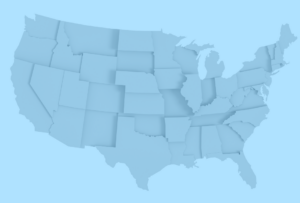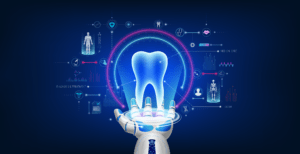
By Rick Valachovic, DMD, MPH, Clinical Professor and Director of the NYU Dentistry Center for Oral Health Policy and Management
You’ve heard me say this before, and you’ve likely said it yourself: The traditional separation of dentistry from medicine hasn’t been good for our oral health. That’s true not only in the United States but also globally, a point underscored this past September when the WHO Collaborating Center for Quality Improvement & Evidence-based Dentistry at NYU Dentistry hosted an Oral Health Side Event during the meeting of the United Nations General Assembly.
The presenters shared many encouraging developments that are advancing oral health around the world, but they didn’t shy away from sharing some hard realities, either. Speakers noted that almost half of the world’s people suffer from oral diseases, and the case numbers continue to rise in all regions of the globe. The World Health Organization (WHO) lays much of the blame on the lack of access to affordable dental care, but Richard Horton, editor-in-chief of The Lancet, which co-sponsored the event, also called out “the global sugar industry” for “working hard … to oppose, to deflect, and to undermine messages about oral public health.”
Dentists and dental hygienists have long counseled their patients to avoid sugary foods, brush after meals, and chew only sugar-free gum, but as a community, we haven’t always considered the value of policy solutions to discourage sugar consumption. Some of my colleagues want to see that change.
Taxing Sugar-sweetened Beverages
In November 2021, Lauren Feldman, DMD, MPH, clinical assistant professor and director of NYU Dentistry’s postdoctoral program in pediatric dentistry called on the American Dental Association (ADA) to join many of its sister organizations and the WHO in supporting the taxation of sugar-sweetened beverages (SSBs). In a commentary in the Journal of the American Dental Association, Lauren shared the growing body of evidence showing that SSB taxes reduce sugar consumption, especially in lower-income and minority communities that are disproportionately affected by diet-related chronic diseases — tooth decay among them.
Results from the United Kingdom (UK) sugar reduction effort are striking. The nation put a tiered Soft Drinks Industry Levy in place in 2018 to tackle childhood obesity. According to a government progress report, “the sales weighted average total sugar content” of SSBs fell by 46% from 2015 to 2020, due to an increase in sales of the lowest tier drinks, “those containing less than 5g of sugar per 100ml.”
Closer to home, the city of Philadelphia, which instituted an SSB tax in 2016 to raise money for universal preschool, obtained similar results. Researchers calculated the tax reduced SSB sales by 38% in the first year, even after accounting for purchases made in neighboring districts to avoid the tax. A few more U.S. cities and some Canadian provinces have instituted SSB taxes, but overall, North America lags behind other parts of the world. Only Mexico has a nationwide SSB tax. Globally 66% of people in low-income and 74% in lower middle-income countries are subject to SSB taxes compared to less than a third of people in wealthier nations.
Other Sweeteners
Philadelphia’s SSB tax also applies to beverages that contain nonnutritive sweeteners such as aspartame, saccharin, and stevia. To be clear, these beverages do not feed the bacteria that produce tooth decay, but they can contribute to enamel erosion. Proponents of including them in SSB taxes say their inclusion discourages consumers from substituting them for sugar-sweetened beverages.
That said, many in the dental community value nonnutritive sweeteners as a practical alternative to more harmful substances, and research suggests they also have a role to play in combating tooth decay. For example, chewing sugarless gum after meals increases the flow of saliva, neutralizing acids in the mouth. As a result, the ADA has given its seal of approval to a variety of chewing gum products that use aspartame, xylitol, sorbitol, or mannitol as sweeteners.
It’s also critical that public health policies be firmly rooted in high-quality evidence. A recent editorial in STAT raised this point in response to a statement this past summer from the WHO’s International Agency for Research on Cancer (IARC), which suggested a potential link between nonnutritive sweeteners and cancer. The author, a dentist, expressed concern that policymakers and the public might seize on this weak association to reduce access to aspartame, a sugar substitute approved by the Food and Drug Administration (FDA) back in 1974. The FDA also responded to the IARC announcement, saying the FDA disagreed with the IARC’s conclusion and pointing out that regulatory and scientific authorities in Europe and Canada have also evaluated aspartame and found it to be safe.
A Global Focus on Sugar?
My colleague Habib Benzian, PhD, who co-directs the WHO Collaborating Center, located within the Department of Epidemiology & Health Promotion here at NYU Dentistry, recently published a commentary in The Lancet advocating for the incorporation of oral diseases and sugars in the WHO framework of non-communicable diseases (NCDs). This tool for setting WHO priorities originally focused on four conditions (cardiovascular diseases, cancers, chronic respiratory diseases, diabetes) and four modifiable risk factors (tobacco use, unhealthy diet, unhealthy use of alcohol, physical inactivity). Mental disorders and air pollution were added to the matrix in 2018. The proposed “6×6” framework would elevate oral diseases to the same level as other NCDs and highlight the importance of reducing sugar consumption.
I hope the WHO will adopt the new framework. I saw the effects of sugar firsthand as a pediatric dental resident at Children’s Hospital in Boston. It’s hard to imagine now, but the city lacked community water fluoridation at that time, and we saw high levels of childhood caries as a result. Fluoridation remains an essential tool in preventing tooth decay, but as the WHO’s Global Oral Health Status Report released in November 2022 pointed out, “Sugar consumption is the main cause of dental caries, showing a clear dose–effect relationship.”
The WHO recommends limiting sugar consumption, whether added to foods or naturally occurring, to less than 10% of daily calories. People in high- and middle-income countries routinely exceed this guideline, and consumption is rising in low-income countries as well. The report also cited “the very high level of free sugars found in commercial foods for infants and young children” as another cause for concern.
Taking Action
Not everyone supports the idea of taxing SSBs. Some people take issue with the idea of governments having any say in what people eat or drink. Others argue that educating individuals to take personal responsibility for what they consume is a better way to improve health. In a written response to one such critic, Lauren pointed out that individuals don’t make choices in a vacuum. “Choice architecture influences personal decisions in beverage selection through marketing, packaging, store placement, and pricing,” she wrote. “The food and beverage industry designs our choice architecture to maximize profits. Sugar-sweetened beverage (SSB) taxes are an effective tool to redesign our choice architecture to maximize health.”
Over the years, states and the federal government have used the same rationale to justify taxing alcohol and tobacco and to limit where these products may be sold. Government interventions to mitigate the potential harms of these so-called commercial determinants of health may be uncomfortable in a society that prizes the free market. That said, it’s hard to imagine anyone arguing that we would be better off today without cigarette taxation and the other public health measures that disrupted the status quo. A 2018 study on the relationship of cigarette taxes and smoking prevalence found a decline of 0.6% for every 25-cent rise in per-pack cigarette taxes, and an even greater drop of 1.5% in smoking among young people aged 18 to 24. Collectively, various U.S. efforts to curb cigarette use reduced youth smoking from 23% in 2000 to less than 3% today.
As a profession, we’ve long supported community water fluoridation, another evidence-based government intervention to support oral health. It’s time for us to seek a similar consensus regarding SSBs. To quote Lauren’s commentary, “The ADA and oral health care professionals are uniquely positioned to help shift the public conversation in recognition of sweetened beverage taxes as an effective policy tool for oral and general health promotion.” I agree and hope our community will take advantage of the WHO’s current focus on oral health to advocate for policy changes that can improve oral health on a global scale.



